
Keep rubber on the road – Care and maintenance of rubber tracks
By Buck Storlie ASV Holdings testing and reliability leader
Features Tech tips technologyGreat equipment design is the first step toward more uptime and ROI, but ultimately a machine is only as good as it’s treated. Rental centers want the greatest bang for their buck, so it’s in their best interest to train customers on operation and cleanliness to optimize equipment longevity.
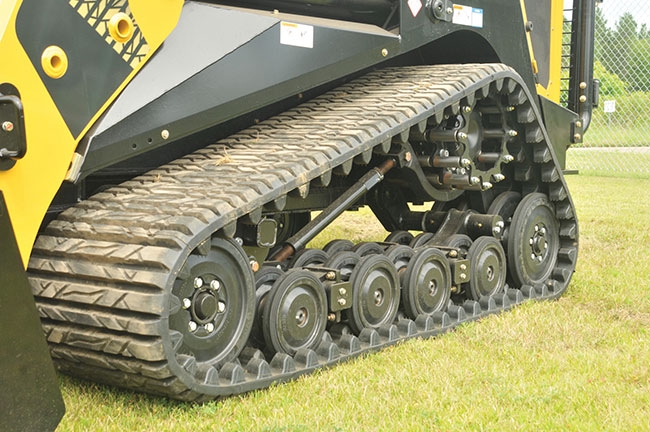 Examining the application and providing customer training for regular cleaning and inspections can help you get more mileage from rubber track compact track loaders. Great equipment design is the first step toward more uptime and ROI
Examining the application and providing customer training for regular cleaning and inspections can help you get more mileage from rubber track compact track loaders. Great equipment design is the first step toward more uptime and ROIIt’s also a good idea to closely monitor equipment to nip potential problems in the bud.
When it comes to rubber track undercarriages these tips couldn’t be more applicable. Simply taking the time to implement these steps can help rental centers get a lot more mileage from their machines. That saves money in replacement costs and makes money by keeping the machines out on rental longer.
How is the Equipment Being Used?
Improper or aggressive operation is a major contributor to excessive wear. In addition, certain applications result in much higher wear than others. To minimize damage, train customers on proper operation before renting them the equipment.
Counter-rotations, or sharp changes of direction, are a big cause of premature undercarriage wear. This is especially true when driving over highly abrasive material, such as shale, granite or ragged materials commonly found on demolition sites. Not only do counter-rotations often lead to cuts in the track, they also result in material build-up on the tracks’ outer edge that gets into the undercarriage. Track systems with rubber wheel designs have the advantage of being open, compared to closed steel designs, allowing material to spill out. But it’s still possible for the abrasive material to get stuck among the roller wheels, lugs and track. Although the mostly rubber components are more forgiving to each other than steel-on-rubber designs, materials can cause chips and cuts. To reduce the risk, encourage customers to use three-point turns.
Operators should also avoid spinning the tracks, especially on abrasive surfaces. Like counter-rotations, spinning can result in cuts in the rubber and unnecessary undercarriage wear.
It isn’t always possible to choose the types of jobs and conditions machines will be used in, but it is important to be aware of the toll different applications can have on track life. Jobs involving a lot of abrasive material, such as demolition, scrap and quarry applications, usually cause extra wear. The potential damage is much greater, so it’s especially important to avoid counter-rotating and spinning in these applications. On the other hand, tasks such as landscaping or golf course work that involve sand, soft dirt or turf, result in minimal wear.
More Clean, Less Wear
Aside from teaching proper operating techniques, rental centers and their customers should regularly clean a compact track loader’s undercarriage since its cleanliness directly impacts the wear rate.
The cleaning frequency depends on the applications and materials operators use the machines in, but daily cleaning is usually sufficient. Remove cohesive and abrasive material, such as mud, clay and gravel, as often as possible, even several times a day. This limits wear to undercarriage components or material buildup that can increase track tension. Remind customers that cleaning off materials such as mud at the end of the day is easier than trying to remove it the next morning after it has dried.
Pay close attention to cleaning around the front and rear roller wheels, where material can accumulate. Use a pressure washer, if available, otherwise a small shovel or similar tool is sufficient. The most important items to remove are highly abrasive objects, such as sharp rocks and demolition material, including rebar, concrete and scrap metal. All of these can damage the inside of the track and undercarriage components. Also, look for strands of material, such as metal wire, that can wrap around components.
Achieving the Best Track Life
Rental centres need to closely inspect rubber track undercarriages after customers return the machines. First look at the track, the part of the compact track loader that gets the most abuse. The average rubber track life is about 2,000 hours but can be as high as 5,000 if maintained well. On the other hand, neglecting a rubber track can result in a wear life as low as 500 hours. To get the longest track life, check track tension and condition daily, conduct visual checks for damage and lubricate grease points.
The track tension should match what is listed in the equipment manual. A loose track can result in ratcheting — lugs skipping over sprocket rollers — which accelerates wear or damage to the lugs. A loose track also increases the risk of derailment. Alternatively, a track that’s too tight can accelerate wear on bearings, wheels and sprockets.
Examine the outside of the track for damage. Rubber track treads accumulate cuts and missing chunks over their lifetime, but these are often cosmetic and may not affect performance. Watch for deep cuts, about four inches or larger, that dig into the core of the track where the inner cords are embedded. Bad cuts, such as this, may get worse and make track replacement necessary. Also, check the tread depth. Rubber track manufacturers generally produce tracks to be usable until there is no tread left. When wear makes it difficult or impossible to properly tension tracks, then it’s time to replace them.
Next, look at the drive lugs. Like the track, lugs encounter wear over time, especially when working in abrasive materials. Side slopes can also be hard on lugs, resulting in one side of the lugs being more worn than the other. Check that the lugs still fit well with the sprocket rollers. A track isn’t usable if lugs are worn down so far that they continually skip over rollers when the track is properly tensioned. This usually happens when about 50 per cent of the lug is gone.
Look at individual components next. Drive wheels wear similarly to the tracks and lugs. Replace a wheel when two-thirds of its rubber is gone. Also, look at the sprocket rollers about every 50 operating hours. Rubber track undercarriages use steel outer roller sleeves that cover steel pins on the sprocket and engage with the lugs. Replace sleeves when they are 50 per cent worn or when they show signs of cracking. The steel sprocket pins can be rotated 180 degrees during sleeve replacement to prolong their service life, as the pins are stationary and typically only wear on one side. When available, it’s best to have inspections and replacements completed by a rubber track compact track loader dealer.
Achieve High ROI from Good Service
Gaining the most out of a rubber track undercarriage requires proper operation, a knowledge of how different applications affect wear, and regular cleaning and inspections. In addition, rental centers should inform customers of proper operation tips, as well as cleaning and inspection tasks.
Proper care can prevent regular problems and lengthen track life, which keeps costs low. Teach and practice careful operation and take a few minutes every day to clean and inspect tracks and components. They are small tasks that will often result in a high return on investment for contractors and rental centres alike.
Buck Storlie is the testing and reliability leader at ASV Holdings Inc. His 22 years with the company give him the expertise to manage product testing, reliability and field issue resolution. He focuses on ensuring customers receive maximum productivity, durability, ROI and comfort out of their ASV machines.
Print this page
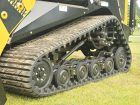
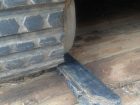
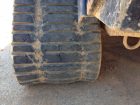
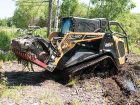
Leave a Reply